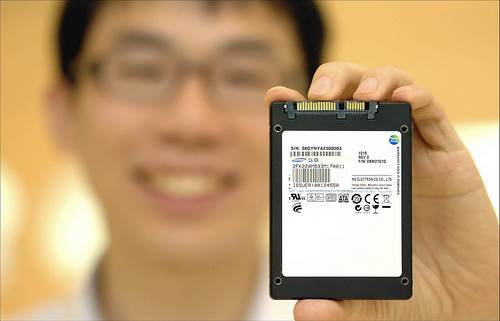Solid State Drives, or SSDs, differ from traditional computer hard drives and will retain memory even after the computer is shut down. Unlike volatile memory that you find with RAM, Solid State Drives are made of flash memory which remember and store the data you have entered. So, what the future holds for SSDs? Let’s learn some more about it.
SSD offers many advantages
 Unlike a hard drive which needs to be operated mechanically in order to store or retrieve data, the solid state drive contains no moving parts which allows it to operate at a much faster speed than a standard hard drive. Data can quickly be retrieved by simply using the index to locate the desired item. The SSD also allows for much faster startups times and allows users to access information stored on the computer much faster. Speed is one key advantage that could lure computer users to upgrade to an SSD. With that being said, some testing results done on initial performance of the solid state drive showed that it lacks somewhat in writing speeds. Improvements are currently be made to increase the speed of writing times.
Unlike a hard drive which needs to be operated mechanically in order to store or retrieve data, the solid state drive contains no moving parts which allows it to operate at a much faster speed than a standard hard drive. Data can quickly be retrieved by simply using the index to locate the desired item. The SSD also allows for much faster startups times and allows users to access information stored on the computer much faster. Speed is one key advantage that could lure computer users to upgrade to an SSD. With that being said, some testing results done on initial performance of the solid state drive showed that it lacks somewhat in writing speeds. Improvements are currently be made to increase the speed of writing times.
Other advantages offered by the SSD include the fact that it runs silently, produces very little to no heat due to no moving parts, reduces the wear and tear on the fan from having to cool the computer, which in turn gives you longer battery life as a result of less fan action.
As far as becoming the storage option of the future, take into account that the SSD, if used the way you would on a normal hard drive, has been estimated to last longer than a regular hard drive, adding more reasons why SSDs are more reliable than HDDs.
What about disadvantages?
When asking the question, “What’s the future of SSDs as storage?”, these factors need to be taken into account along with all of the positive aspects of the solid state drive. At the present time, expect to pay an extremely high price for SSDs per gigabyte. As with any newer technology, as time passes they should become less expensive.
Also, the current storage capacity offered by SSDs may not fit the data storage needs of many at this time. Research has shown that the bigger capacity of SSDs the greater the performance and reliability would drop. This means we can only have bigger capacity or faster performance, but we can’t have both. As capacity is more likely a metric of SSDs that will keep improving, it will soon come to a point where the performance gap between HDDs and SSDs will shrink, and the technology of solid-state drives could be doomed by then.
[Read also: How Big Do You Think Hard Drives Can Go?]
Conclusion
With all of the valuable benefits offered in the SSD, this should be a product that will become more readily available and widely used as an alternative to standard hard drives. However, if you’re like many people, while we wait for prices to come down and storage capacity to increase, we can always keep in mind that external hard disk drives are useful for storing files offline and may help us with our storage needs while we wait. Only time will tell if the SSD is simply a passing phase or if it is here to stay and will truly become the future of data storage.
[Image credit: oxana_n, Flickr]

Great article Peter! I just got done installing a 2nd SSD drive into my desktop. The prices are really starting to become more reasonable these days. I bought one a few years ago and had to go with a measly 64 GB drive since they were so expensive. This time around, I was able to get a 512GB SSD for a less than I got the 64GB one for.
Although prices are dropping, the bigger SSDs are still very much expensive. Most people can only afford the smaller ones as they are cheaper. A smaller SSD combining with a large HDD is actually a perfect upgrade combination and would provide a very good performance for an average computer user. Thanks for sharing your thoughts, Dominic!
I agree 100% Peter. I actually wrote up an article a few months ago on my blog talking about a SSD + SATA setup.
Nice blog there, Dominic! It would be an honor if you could write a guest post regarding computers for us. Btw, could you please use a gravatar that would be great 😉 Thanks.
Yes Peter, you are correct. Apple brought in fusion drive in iMacs by combining a large HDD with the SSD. This is one of the fine way to intoroduce SSDs to the users. Many of us won;t imageine to get a SSD due to its high price.
I know many builders who install SSD as a boot drive and load OS and maybe couple of games on it, and use HDD as secondary for storage. It is true that the longer we wait, the cheaper they get. Dreaming about Samsung Evo 1 TB drive in my desktop!